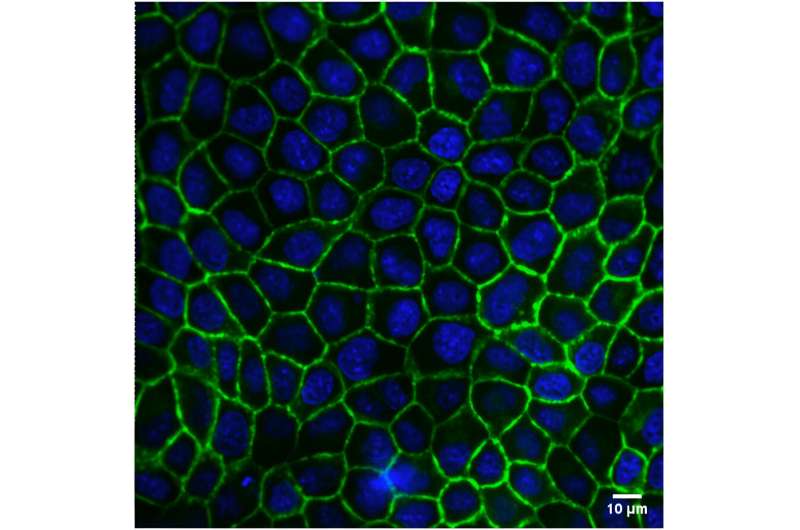This article has been reviewed according to Science X's editorial process and policies. Editors have highlighted the following attributes while ensuring the content's credibility:
fact-checked
peer-reviewed publication
trusted source
proofread
From forming embryo to cancer metastasis: The significance of collective cell movement

Against all expectations, the most common tissue in our bodies behaves differently at different length scales. That's what physicist Luca Giomi discovered in his research into the flow of cells. "Our findings are even more interesting than we hoped for."
The same process that allows cells in an embryo to move to the right location to become your spine or heart is also behind cancer metastasis: the collective movement of cells in the epithelium. Clearly something we need to understand better, according to Giomi. "These cells move collectively like a flock of birds. But they have no vision or memory, so how is this possible? That is what we want to understand."
The research has been published in Nature Physics and Nature Communications.
What is the epithelium?
The epithelium is a single layer of cells that covers all organs. It has to perform many functions. Giomi illustrates this with the outer layer of your skin—also epithelial tissue. If you pull it, it bounces back to its original shape like a solid material.
However, when you have a wound, the cells will flow there to cover it. Just like a fluid. It turns out that the phase is something in between, Giomi says. "We realize now that there is a whole continuum between solid and fluid states that we don't yet fully understand."
The hidden structure of epithelial tissue
As a physicist, Giomi's approach is mechanical. From this perspective, cells only have two tools at their disposal, he explains. "First, they can exert forces on each other. Push or pull their neighbors. And secondly, they have a shape. The shape of the cells determines the structure inside the tissue. There is an intimate connection between this structure and the mechanical forces that lead to the movement of the cells."
Therefore, the researcher studied the orientation of the moving cells.
"The cells look mostly structureless so you might expect their motion to be random. But they are approximately hexagonal, so we tried to describe the tissue as a fluid of hexagons with movement along six axes. This worked on smaller scales but something was missing. There was another, hidden structure. At larger scales, we realized the movement follows a filamentary structure. Like a fluid of rods. At some length scale, there is a crossover from the hexatic structure, to what we call a nematic order. In other words, it is a multi-scale structure."
Checking the theory in the lab
Giomi is a theoretical physicist. So he turned to his experimental colleagues to verify his idea. "It was all just a mathematical theory at this point. I didn't even think it was possible to confirm it in the lab. You'd have to be very lucky for the crossover point to be visible at the scale of your samples," Giomi notes. "But we actually did see the crossover at a scale of around 20 to 30 cells. Turns out we were indeed lucky."
The group of Thomas Schmidt together with a group in Paris carried out experiments to understand the dependencies of the crossover. For example, the influence of material properties like cell density or the type of substrate. Giomi is very pleased with this progress. "Not only is our theory confirmed, but we are already starting to understand the specifics thanks to these experiments."
What does this mean for health care?
Although his work does not enter the realm of applied research, Giomi does see potential benefits for health care.
"I think we can learn a lot if we compare healthy and damaged tissues. I especially see a diagnostic goal when it comes to cancer treatment. Cancer cells are out of control and therefore the basic laws of physics and mechanics are the most promising way to predict their behavior."
"If we understand metastasis, we might be able to predict how cancer cells will spread a few days in advance. Or even more fascinating, we might eventually be able to slow it down. Don't get me wrong—this is still purely hypothetical. But I have hope that we will get there someday."
More information: Josep-Maria Armengol-Collado et al, Epithelia are multiscale active liquid crystals, Nature Physics (2023). DOI: 10.1038/s41567-023-02179-0
Julia Eckert et al, Hexanematic crossover in epithelial monolayers depends on cell adhesion and cell density, Nature Communications (2023). DOI: 10.1038/s41467-023-41449-6
Journal information: Nature Communications , Nature Physics
Provided by Leiden Institute of Physics





















